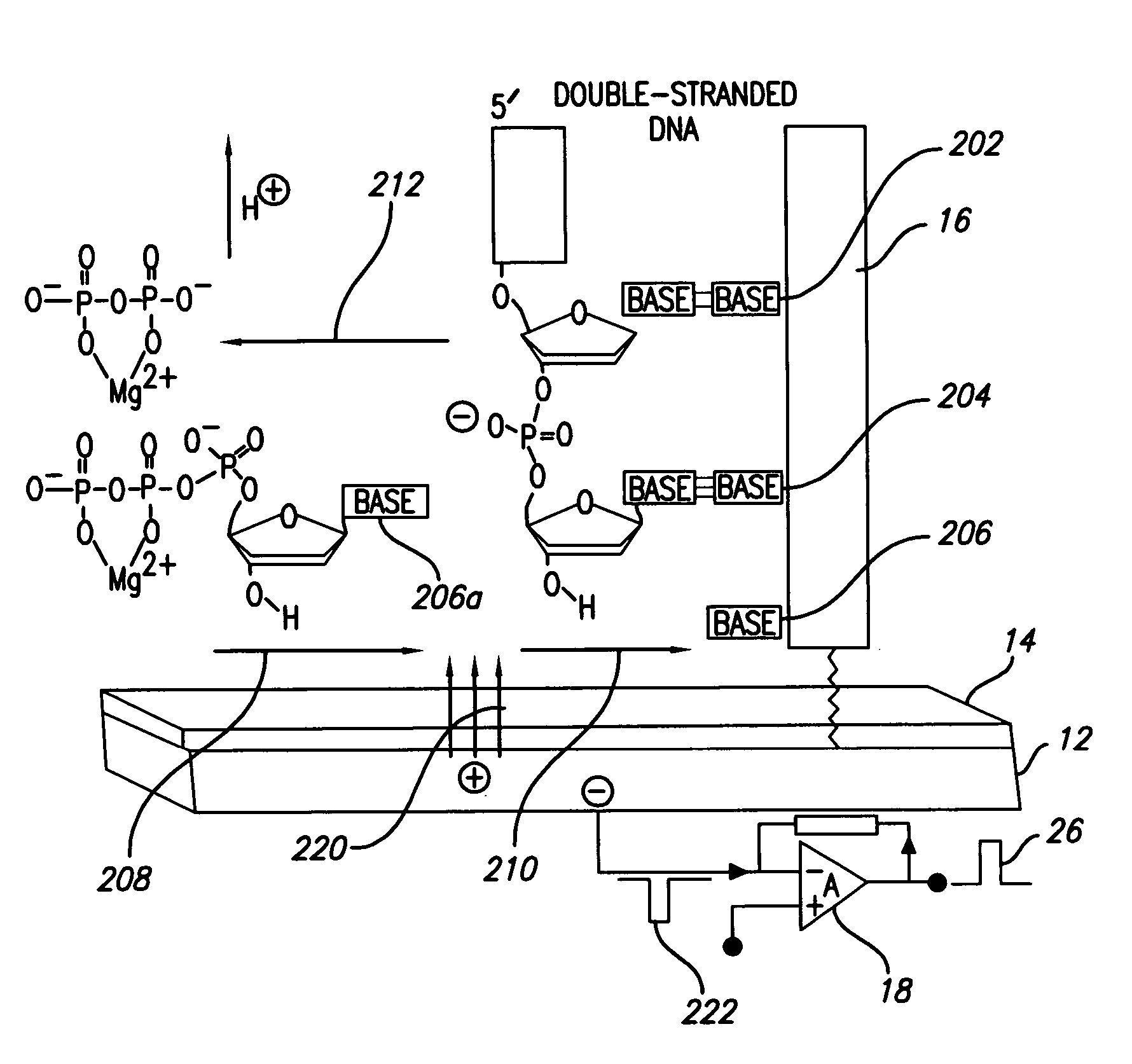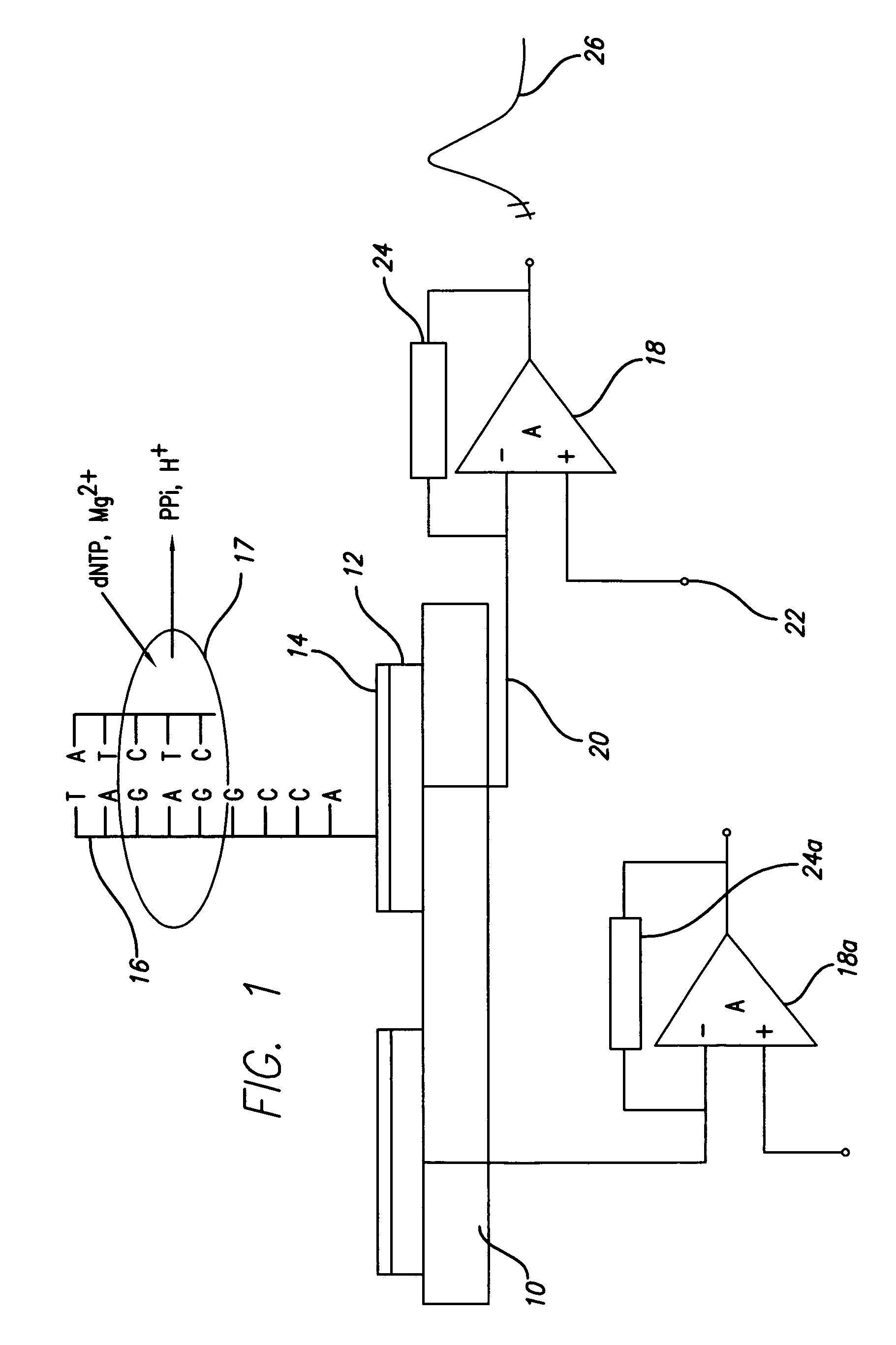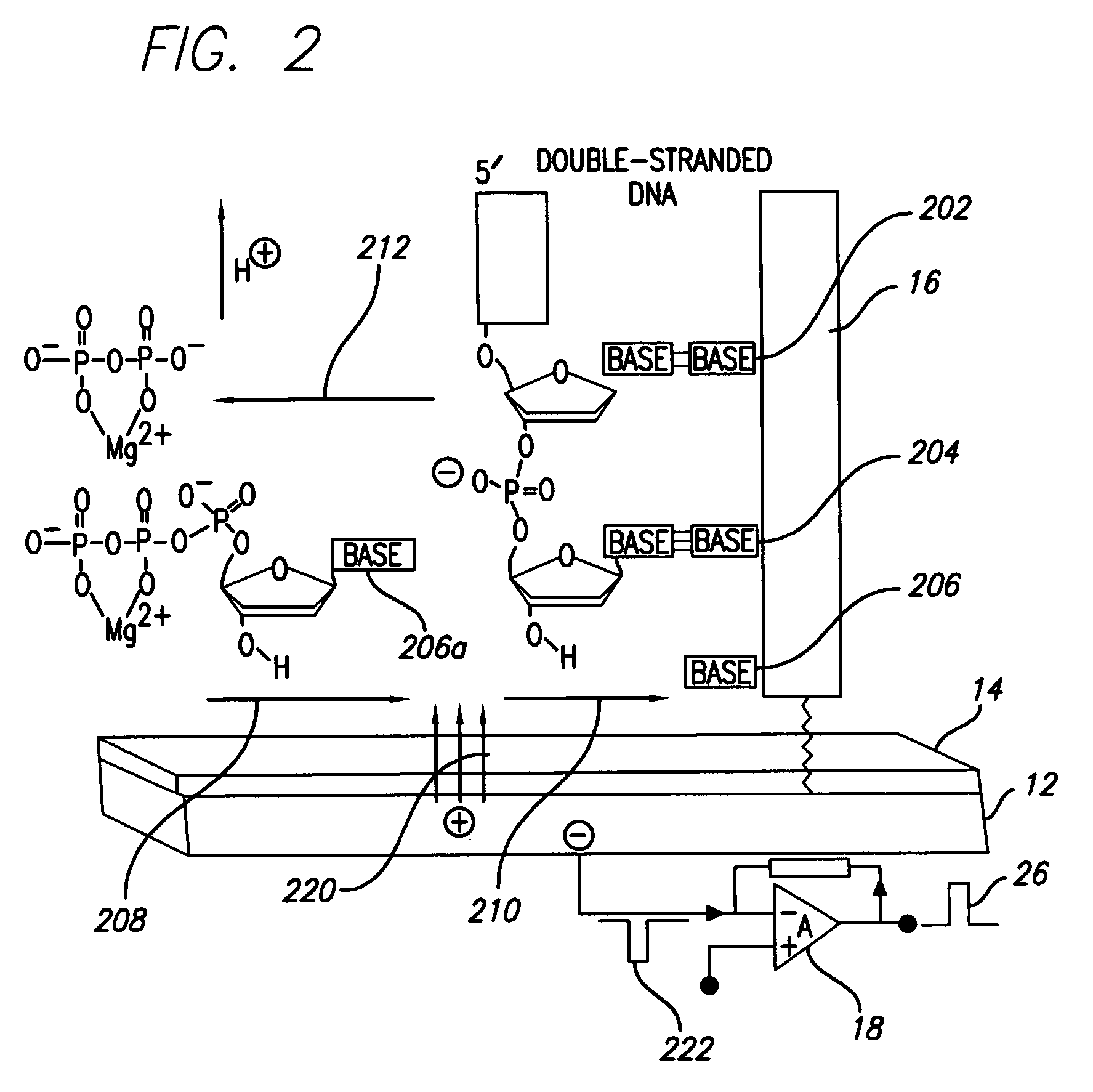Charge perturbation detection system for DNA and other molecules
a detection system and charge technology, applied in the field of electrochemical molecular detection, can solve the problems of direct, label-free electrochemical detection methods, and achieve the effect of reducing the number of dna and other molecules
- Summary
- Abstract
- Description
- Claims
- Application Information
AI Technical Summary
Benefits of technology
Problems solved by technology
Method used
Image
Examples
example 1
(FIG. 1): Schematic Diagram of Charge Perturbation Detection System
[0066]FIG. 1 is a schematic diagram of a device according to the present invention, with attached enzyme and substrate, showing the generation of ions and the detection circuitry. The device is formed on a substrate 10, by the attachment of a metal electrode 12, preferably of an oxidation resistant, high potential metal such as gold. A coating or insulation layer 14, may also be applied to the electrode 12. A template DNA strand 16 is attached to the electrode structure. A primer DNA strand is hybridized to the template DNA strand 16. Deoxynucleotide triphosphate (dNTP) and Mg2+ ions are added. Incorporation of the complementary dNTP releases inorganic pyro phosphate (PPi) and H+ ions (protons). A DNA polymerase complex is illustrated at 17 and ion movement is shown relative to the enzymatic reactions, i.e. dNTP, MG2+ in and PPi and H+ out.
[0067]As described below, the charge perturbation in the vicinity of the elect...
example 2
(FIG. 2): Template Orientation and Operation
[0069]DNA polymerase catalyzes the incorporation of complementary nucleotides, resulting in perturbations of local electrical charge. Perturbations are based on interactions of system components and release of products of polymerization. These local perturbations of charge in solution induce a charge in coated polarazible gold Charge Perturbation Detection system (CPD) electrode. This event is detected as a transient current by voltage clamp amplifier, which compensates induced charge in the gold electrode. The high-impedance coating prevents faradaic current that could deteriorate the sensor and analytes. For measurements of electrical activity of CPD electrode was used Axopatch 200B voltage clamp amplifier, but in principle any voltage-clamp amplifier can be used. Voltage command was kept at steady 0 mV holding potential, but because no faradaic current is present the voltage command can be kept on different holding potentials and can be...
example 3
(FIG. 3): Analysis of Signals
[0073]If the addition of individual dNTPs is performed sequentially, then nucleotide sequence peaks will appear as shown in a sequence poly-gram (FIG. 3). The individual detected signal is shown in FIG. 3A and FIG. 3C. If the addition of dNTPs is performed with a mix of all nucleotides then a run-off polymerization signal is detected (FIG. 3C). This signal can be then analyzed and multiple nucleotide bases can be determined by the shape of the curve, which will vary in response to the particular nucleotide incorporated.
[0074]In FIG. 3A, the addition of a dGTP binding to a C nucleotide in the template is shown. The spikes at the beginning of the signal are caused by dispensation disturbance and initial diffusion of dGTP solution and are easily filtered out. With no measurable delay after dispensation, current rises to a peak of ˜400 picoamps (pA) within ˜50 milliseconds (ms), rapidly decreases to ˜50 pA, and then shows a further, slower transient increase...
PUM
| Property | Measurement | Unit |
|---|---|---|
| current | aaaaa | aaaaa |
| current | aaaaa | aaaaa |
| feature size | aaaaa | aaaaa |
Abstract
Description
Claims
Application Information
 Login to View More
Login to View More - R&D
- Intellectual Property
- Life Sciences
- Materials
- Tech Scout
- Unparalleled Data Quality
- Higher Quality Content
- 60% Fewer Hallucinations
Browse by: Latest US Patents, China's latest patents, Technical Efficacy Thesaurus, Application Domain, Technology Topic, Popular Technical Reports.
© 2025 PatSnap. All rights reserved.Legal|Privacy policy|Modern Slavery Act Transparency Statement|Sitemap|About US| Contact US: help@patsnap.com



